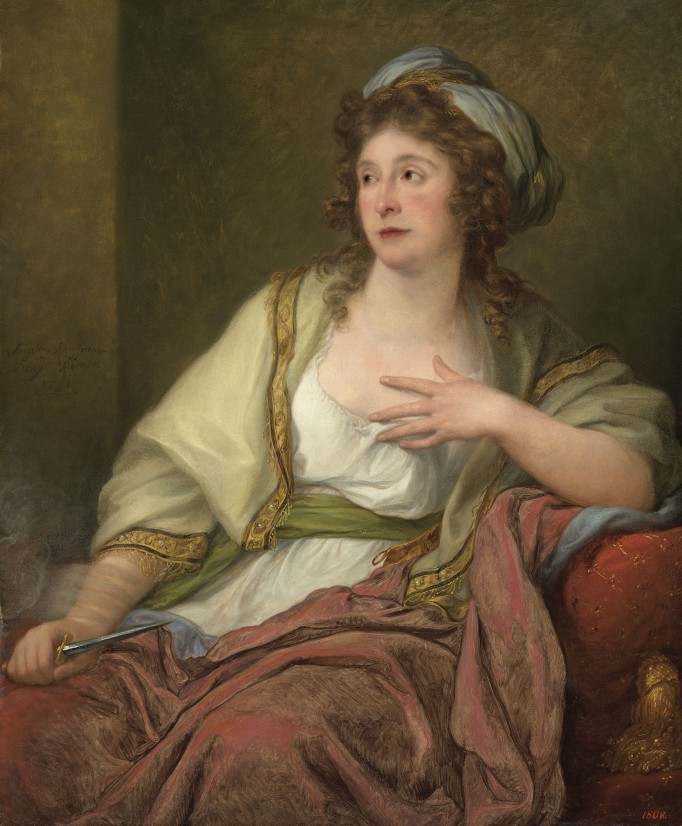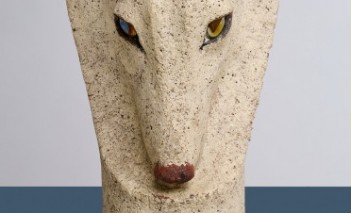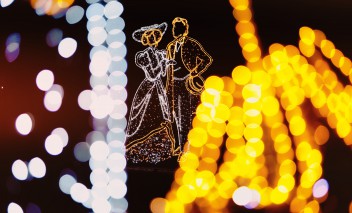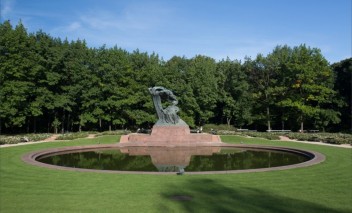Angelica Kauffmann in Stanisław August’s Gallery

One of the most outstanding painters of the 18th century, admired in European capitals, has earned the name of the "Female Raphael of Art". Emperors and kings, including Stanisław August, were among her clients. Two paintings by the famous Swiss artist were part of his collection.
Angelica Kauffmann was one of the few female painters who followed the Neo-Classical style. Scholars estimate that she left behind about 800 works. Their extraordinary popularity is clear given the innumerable number of copies and imitations of her paintings, including graphical imitations (which amount to 600 items). The artist has been successful not only in portrait painting, but first and foremost in history painting, which was the most respected genre at the time. Examples of the latter include the "Ariadne Abandoned by Theseus" from Dresden, which will be displayed in the Royal Łazienki from 1 May 2017.
Angelica Kauffmann thus managed to go beyond the expectations commonly imposed on female painters – such as her rival and friend, portraitist Madame Le Brun – and enter the world largely reserved for male painters.
On King’s Order
The aristocratic clientele of the Swiss painter included many Poles, who are listed among her most important followers in books on her work. Most of Angelica Kauffmann’s portraits of Polish personalities were painted in the last, Italian period of her work. At the time, the artist was at the peak of her fame, and her workshop located in the Palazzo near Via Sistina, near the Spanish Steps, previously occupied by Anton Raphael Mengs, was the most prestigious painting atelier in the Eternal City. She was often visited by Polish aristocrats completing the customary Grand Tour, one of whose main stages was Rome.
In 1787, via his Rome-based agent Tommas Antici, Stanisław August commissioned the painter to paint Virgil Reading the "Aeneid" to Augustus and Octavia.
We do not know if the King had an influence on the choice of the subject matter; it seems that he did not, as this theme belongs to the wider context of history painting, often undertaken by the painter. However, as he would often do, the Polish ruler tried to influence the artistic process, which can be inferred from his correspondence with Marcello Bacciarelli. Stanisław August’s chief painter, who stayed in Rome at the time, informed the monarch, that the painter was working in accordance with the "idea" communicated to her. The painting was finished between 1787 and 1788, and most likely sent to Poland in 1788. It is unknown where it initially hung; it might have been the Royal Castle. In 1792 or 1793, it was moved to the Picture Gallery on the ground floor of the Palace on the Isle.
Virgil Reading the "Aeneid" to Augustus and Octavia – alongside Hero and Leander from 1791 – is considered one of the most important works from Angelica Kauffmann’s mature period. It is a large-scale painting, like other works from that period, containing a rich, fragmented composition with a vivid colour scheme. The subject matter, taken from a 5th-century writer Macrobius, is the moment when Octavia, sister of Emperor Augustus, faints while listening to Virgil reading the Aeneid, who – in the 6th book of his poem (verses 860-884) – mentions her prematurely deceased son, Marcellus.
Portrait of the Duchess
The second painting by Angelica Kauffmann, which came into possession of Stanisław August, was the "Portrait of Princess Giuliana Pubblicola Santacroce". It is not an ordinary portrait, but – like most portraits by the painter – a historicized portrait, portrait historié, conceived as a more ambitious work on the borderline between portrait art and a more noble genre – history painting. It represents Giuliana Santacroce as a virtuous Roman lady Lucretia, who could not bear disgrace and chose death by her own hand.
Giuliana Pubblicola Santacroce, from the Falconieri family from Florence – married to Prince Antonio Pubblicola Santacroce since 1767 – was one of the most colourful representatives of the Roman high society – a woman with a freedom of manners, who did not shy away from worldly delights. In 1790, the youngest brother of Stanisław August, Primate Michał Poniatowski, acquainted her with Cardinal François-Joachim de Pierre de Bernis, French ambassador in Rome, with whom Giuliana remained in a long-standing relationship. Through Poniatowski’s mediation, a year later, on 3 May 1791, Duchess’ brother Leio Falconieri received from Stanisław August the highest Polish distinction – the Order or the White Eagle, which he had sought to obtain. In a gesture of gratitude for the Polish monarch, Duchess Santacroce gifted him her portrait commissioned with Angelica Kauffmann with that goal in mind. According to a research study by Angela Sołtys, PhD, this happened with a significant contribution of Primate Michał Poniatowski, who suggested to the Duchess that a gift of this kind, painted by the famous artist, would be a source of great pleasure for the Polish monarch.
In August 1791, the painting, which cost 80 sequins, was sent to Warsaw, to the hands of Michał Poniatowski, who – after receiving the gift in 1792 – handed it over to the King. The work initially hung in the King’s Study in the Palace on the Isle.
Picture Gallery
That Stanisław August valued Kauffmann’s painting highly is clear from the fact that eventually, it was moved to the Picture Gallery, also known as Gallerie en bas (Gallery on the ground floor), whose painting arrangement, consisting of 65 works, was completed in the late 1793.
This is where best paintings from the King’s collection were displayed; they were gathered not only by virtue of their painters’ names, but also the "nobility" of their subject matters.
Paintings from Italian schools dated to the 16th century hung alongside 17th century Dutch paintings and works of contemporary artists, landscapes with portraits, religious and mythological paintings. Paintings by Angelica Kauffmann were displayed next to works by old masters such as Titian, Rubens and Rembrandt.
Fortunately, the "Portrait of Princess Giuliana Pubblicola Santacroce" was not sold during any of the numerous auctions, at which Stanisław August’s nephew, Prince Józef, and later his sister, Maria Teresa Tyszkiewiczowa, would dispose of paintings inherited from Stanisław August. It stayed in the Łazienki Palace, sold by the King’s niece in 1817 (together with its furnishings) to Tsar Alexander I. As a result, today the painting is part of Polish museum collections; under the Treaty of Moscow of 1921, all Polish works of art held by Russia became the property of the Republic and were included in the State Collections. The portrait of Duchess Santacroce was displayed in the Palace on the Isle, where it can also be seen today.
The fate of the other painting by Angelica Kauffmann, which adorned the Royal Picture Gallery – Virgil Reading the "Aeneid" to Augustus and Octavia, was different. In 1798, after the death of Stanislaw August, it was taken from the Royal Łazienki by Prince Józef and moved to his apartments in the Copper-Roof Palace. According to information from the catalogue of the Royal Picture Gallery, the painting was stolen in 1816. We do not know where it was at the time of the theft; Prince Józef had died three years earlier, and his heir, Maria Teresa Tyszkiewiczowa, became the owner of the painting. According to Russian sources, the painting entered the Hermitage collections in 1902 "from the Royal Łazienki". Such history of the painting could not be confirmed using the sources available in Poland – the inventories from 1817, 1839 and 1895 did not record it as part of the collections.
Currently, the painting is the pride of the Russian Hermitage – displayed during all exhibitions of Kauffmann’s work, and recognized as one of her most important works.
It is thus with great pleasure that The Royal Łazienki Museum is presenting to the Polish audiences, in the Łazienki Picture Gallery – alongside the "Portrait of Duchess Santacroce" – the excellent "Ariadne" from the Dresden Painting Gallery, one of the most beautiful – judged by artistic excellence – historical depictions by Angelica Kauffmann.





